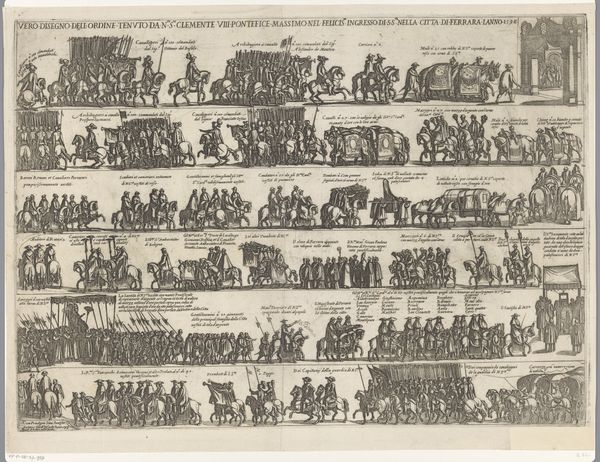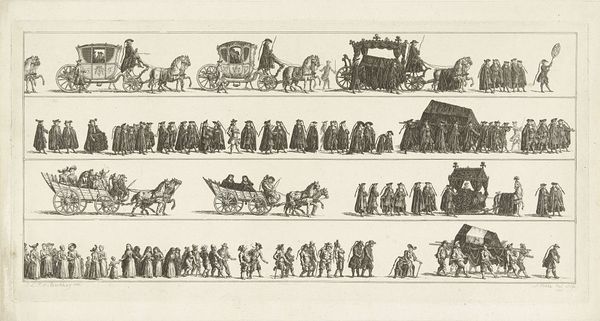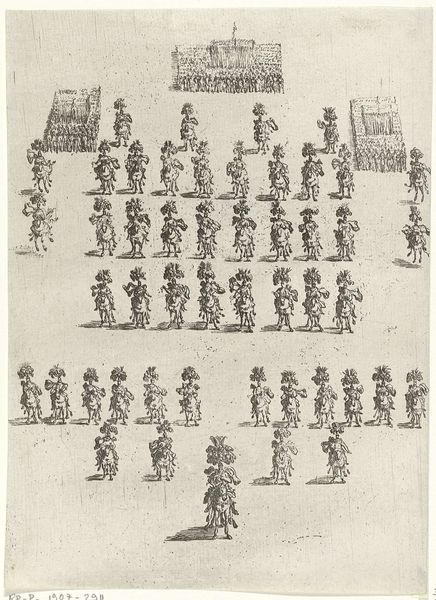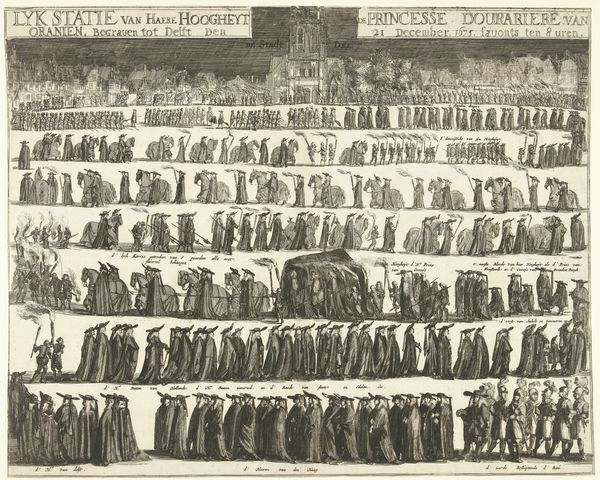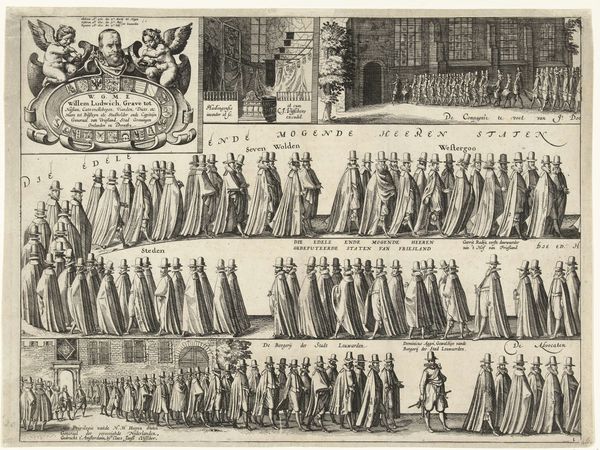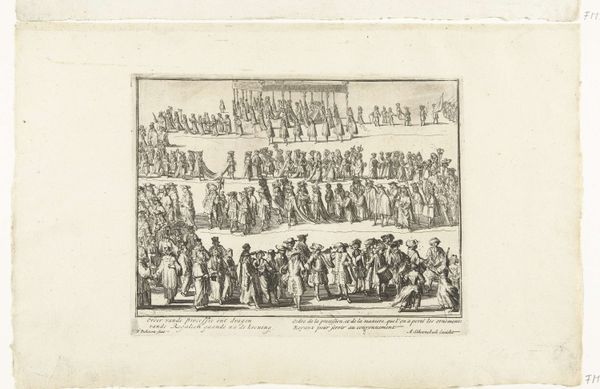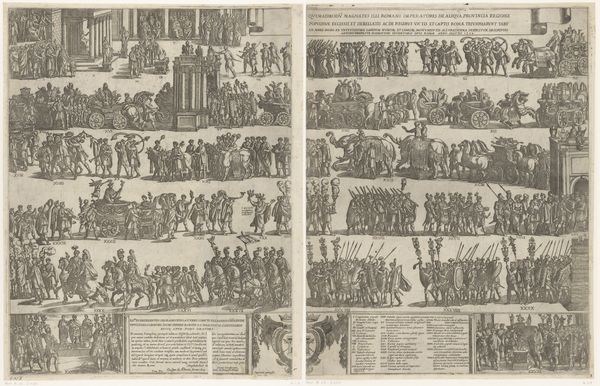
print, engraving
#
portrait
#
baroque
# print
#
old engraving style
#
landscape
#
figuration
#
line
#
history-painting
#
engraving
Dimensions: height 184 mm, width 307 mm
Copyright: Rijks Museum: Open Domain
Curator: Here at the Rijksmuseum, we have a piece titled "Lijkstatie van prinses Anna, 1759," a detailed engraving memorializing the funeral procession of Princess Anna. Editor: It's incredibly orderly, isn't it? The composition is so rigidly structured. Lines and lines of mourners… it feels almost suffocating. Curator: Yes, the artist, who remains anonymous, meticulously captured the social hierarchy and the public performance of mourning that characterized the Baroque era. The event was held on February 23, 1759, if you read the title on the bottom. Editor: The lines created by the engravings create the perspective. What can you say of the texture? Curator: What appears like uniform sorrow becomes diversified upon closer inspection. Note the slight variations in clothing, the positioning of figures, these details communicate social standing. This wasn't just about grief; it was about power and its representation. Editor: The somber figures in dark clothing really emphasize a visual mood. Also, those linear shapes emphasize the horizontal spread and scale of the image. Curator: Exactly. Royal funerals were meticulously planned events. Each element – from the order of procession to the types of clothing worn – conveyed specific messages about the status of the deceased and the continuity of dynastic power. Engravings such as this one were powerful tools to disseminate this information to a wider audience. Editor: But the aesthetic is...stark. All those dark robes make a heavy presence. Almost claustrophobic. Curator: This piece showcases the societal function of royal spectacle during the 18th century, when a display such as the subject of the engraving also displayed the role of aristocracy within society. Editor: Well, examining the shapes, I still have my impression that there is something deeply mournful in the work. Curator: By analyzing its structure, we understand the power structures of the 18th Century Dutch Republic. Editor: But thanks to that, by breaking down that context, now the lines have far more to say to me than before!
Comments
No comments
Be the first to comment and join the conversation on the ultimate creative platform.


